Best Laravel Tools to Buy in December 2025
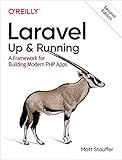
Laravel: Up & Running: A Framework for Building Modern PHP Apps


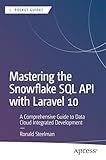
Mastering the Snowflake SQL API with Laravel 10: A Comprehensive Guide to Data Cloud Integrated Development (Apress Pocket Guides)



Laravel Essentials: Tips & Tricks for Developers: Master Laravel with Practical Tips for Every Developer



Architecture of complex web applications. Second Edition.: With examples in Laravel(PHP)


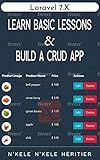
Laravel 7.X : LEARN BASIC LESSONS & BUILD A CRUD APP (PHP Framework)


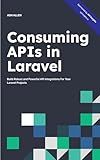
Consuming APIs in Laravel: Build Robust and Powerful API Integrations For Your Laravel Projects With Ease


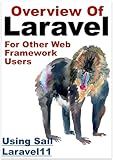
Overview Of Laravel PHP Framework: For Other Web Framework Users



The Laravel Survival Guide: Written & Updated for Laravel 5.3


Using "with" in Laravel allows you to eager load relationships to optimize your database queries and improve performance. Here's how you can use it:
- Eager Loading Relationships: You can use the "with" method to specify which relationships you want to load when retrieving data. It helps reduce the number of database queries required to fetch related data. Example: $posts = Post::with('comments')->get(); // This retrieves all posts with their associated comments
- Nested Eager Loading: You can also eager load nested relationships using dot notation. Example: $posts = Post::with('comments.user')->get(); // This retrieves all posts with their comments and associated user details
- Eager Load Constraints: You can add constraints to the eager loading queries by specifying a closure function. Example: $posts = Post::with(['comments' => function ($query) { $query->where('approved', true); }])->get(); // This retrieves all posts with only approved comments
- Lazy Eager Loading: Laravel also provides a "lazy" method for loading relationships on demand. Example: $posts = Post::all(); // Fetch all posts without loading relationships foreach ($posts as $post) { $post->load('comments'); // Load comments for each post }
Using "with" in Laravel helps avoid the N+1 query problem by loading relationships upfront instead of making separate queries for each relationship. It is a powerful tool for optimizing database queries and improving performance in your Laravel applications.
How to use "withDefault" with a custom default value in Laravel?
In Laravel, you can use the withDefault method to associate a model with a default value. By default, it will return null if the model is not found. However, you can use a custom default value by passing it as an argument to the withDefault method.
Here's an example of how you can use withDefault with a custom default value in Laravel:
- First, define a relationship on your model, for example, let's say you have a User model with a hasOne relationship with a Profile model:
public function profile() { return $this->hasOne(Profile::class); }
- Now, you can use the withDefault method to associate a default value to the relationship. In this example, we'll set the default profile name to be "No Profile":
public function profile() { return $this->hasOne(Profile::class)->withDefault(['name' => 'No Profile']); }
- Now, when you access the relationship and the associated model is not found, it will return the default value instead of null. For example:
$user = User::find(1); echo $user->profile->name; // If profile is found, it will return its name. Otherwise, it will return "No Profile".
By using withDefault with a custom default value, you can handle cases where the associated model is not found more gracefully.
How to use "with" in Laravel to eager load relationships?
In Laravel, you can use the with() method to eager load relationships and improve performance when retrieving data from the database.
Here's an example of how to use with() to eager load relationships in Laravel:
-
Define your models and relationships: // User.php class User extends Model { public function posts() { return $this->hasMany(Post::class); } } // Post.php class Post extends Model { public function comments() { return $this->hasMany(Comment::class); } } // Comment.php class Comment extends Model { public function user() { return $this->belongsTo(User::class); } }
-
Use the with() method in your controller or query to eager load relationships: // UsersController.php public function index() { // Eager load the user's posts and comments $users = User::with('posts.comments')->get(); return view('users.index', compact('users')); }
-
Access the loaded relationships in your view or wherever you're using the data: // users.index.blade.php @foreach($users as $user)
{{ $user->name }}
@foreach($user->posts as $post)
{{ $post->title }}
@foreach($post->comments as $comment)* {{ $comment->body }}, by {{ $comment->user->name }} @endforeach@endforeach @endforeach
By using with(), Laravel will preload the specified relationships, reducing the number of additional queries executed when accessing these relationships. This helps improve performance especially when dealing with large datasets.
How to use "withTrashed" to include soft deleted records in eager loading in Laravel?
In Laravel, the withTrashed method allows you to include soft deleted records in eager loading relationships.
To include soft deleted records in eager loading, you need to follow these steps:
- Define a relationship method in your eloquent model that will return the related records. For example, if you have a User model with a posts relationship, your code might look like this:
public function posts() { return $this->hasMany(Post::class); }
- Use the withTrashed method before eager loading the relationship. This will indicate that you want to include soft deleted records. For example:
$users = User::withTrashed()->with('posts')->get();
- Access the eager loaded relationship as usual. For example, you can access a user's posts like this:
foreach ($users as $user) { foreach ($user->posts as $post) { // Do something with the post } }
By using the withTrashed method before eager loading the relationship, Laravel will include both active and soft deleted records in the eager loaded relationship.
How to use "withAvg" in Laravel to calculate the average value of related records?
In Laravel, you can use the withAvg method to calculate the average value of related records. Here is an example:
Let's say you have a model named User which has a relationship with another model named Order. Each user can have multiple orders. To calculate the average order amount for each user, you can use the withAvg method like this:
$users = User::withAvg('orders', 'amount')->get();
In this example, orders is the name of the relationship method defined in the User model, and amount is the field on the Order model that you want to calculate the average of.
The result of this query will be a collection of User objects, with an additional attribute orders_avg_amount. You can access this attribute to get the average order amount for each user, like this:
foreach ($users as $user) { echo "User: ".$user->name." - Avg Order Amount: ".$user->orders_avg_amount.""; }
This will display the name of each user along with their average order amount.
Note: Make sure you have defined the relationship between the User and Order models correctly and the amount field exists in the orders table.
